Author: Marshall Schott
The first hop released by Idaho’s Jackson Farm, 007 Golden Hop, formerly known as Idaho 7, created quite the buzz among brewers when it hit the scene in 2015. With its solid oil content and high alpha acid along with descriptors such as orange, tangerine, black tea, and pine, 007 Golden Hop offered brewers a unique blend of characteristics that was sure to pique the interest of many.
Alpha: 12.2 – 15.4%
Beta: 4.2 – 5.5%
Cohumulone: unknown
Total Oil: 1 – 1.6 mL/100g
Myrcene: unknown
Humulene: unknown
Caryophyllene: unknown
Farnesene: unknown
Linalool: unknown
Geraniol: unknown
ß-Pinene: unknown
Parentage: unknown
I recall first hearing about 007 Golden Hop, or Idaho 7 as it was called then, sometime late in 2015 and was excited try it out for myself. However, by the time I went to buy some, it was sold out. Since that time, I’ve tried various beers made using this novel variety, often in combination with other hops though occasionally on its own. My experience being generally positive, I was curious to see what others would think of a beer made solely with 007 Golden Hop!
| MAKING THE BEER |
I went with my standard simple Pale Ale recipe in order to keep the hop character at center stage.
007 Golden Hop Pale Ale
Recipe Details
| Batch Size | Boil Time | IBU | SRM | Est. OG | Est. FG | ABV |
|---|---|---|---|---|---|---|
| 5.5 gal | 30 min | 33.0 IBUs | 5.7 SRM | 1.052 | 1.013 | 5.1 % |
| Actuals | 1.052 | 1.011 | 5.4 % | |||
Fermentables
| Name | Amount | % |
|---|---|---|
| Pale Ale Malt (Muntons) | 10 lbs | 90.91 |
| Munich Malt (Muntons) | 1 lbs | 9.09 |
Hops
| Name | Amount | Time | Use | Form | Alpha % |
|---|---|---|---|---|---|
| Idaho #7 | 8 g | 30 min | First Wort | Pellet | 12.3 |
| Idaho #7 | 28 g | 15 min | Boil | Pellet | 12.3 |
| Idaho #7 | 56 g | 1 min | Boil | Pellet | 12.3 |
| Idaho #7 | 90 g | 0 min | Dry Hop | Pellet | 12.3 |
Yeast
| Name | Lab | Attenuation | Temperature |
|---|---|---|---|
| Flagship (A07) | Imperial Yeast | 75% | 60°F - 72°F |
Notes
| Water Profile: Ca 87 | Mg 1 | Na 10 | SO4 125 | Cl 62 |
Download
| Download this recipe's BeerXML file |
I made a starter of Imperial A07 Flagship Yeast a couple days ahead of time.
The next night, I collected the brewing liquor then weighed out and milled the grains.
Having set my heat stick timer to turn on a couple hours before I started brewing, I woke up the following morning to perfectly heated strike water.

I proceeded to mash in with the help of my cute brewing assistant.
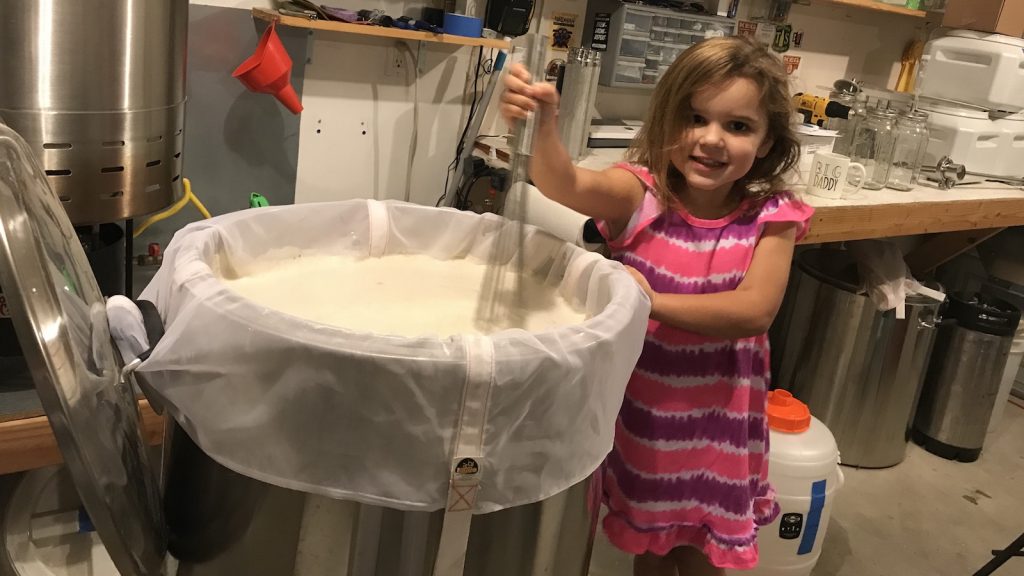
After stirring gently for a couple minutes, I checked to make sure I’d hit my target mash temperature.
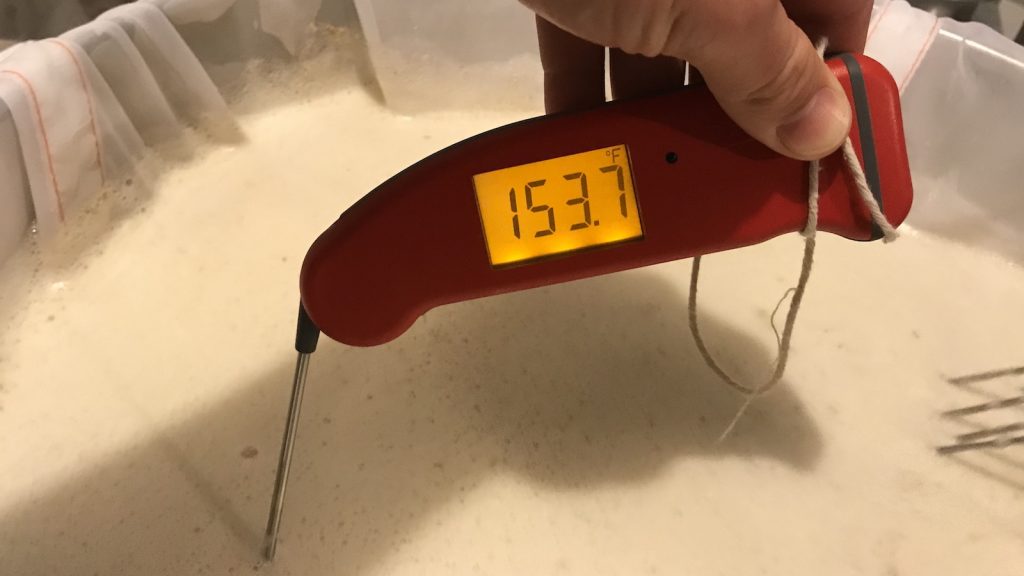
A pH reading 15 minutes into the mash step showed it was right on target.
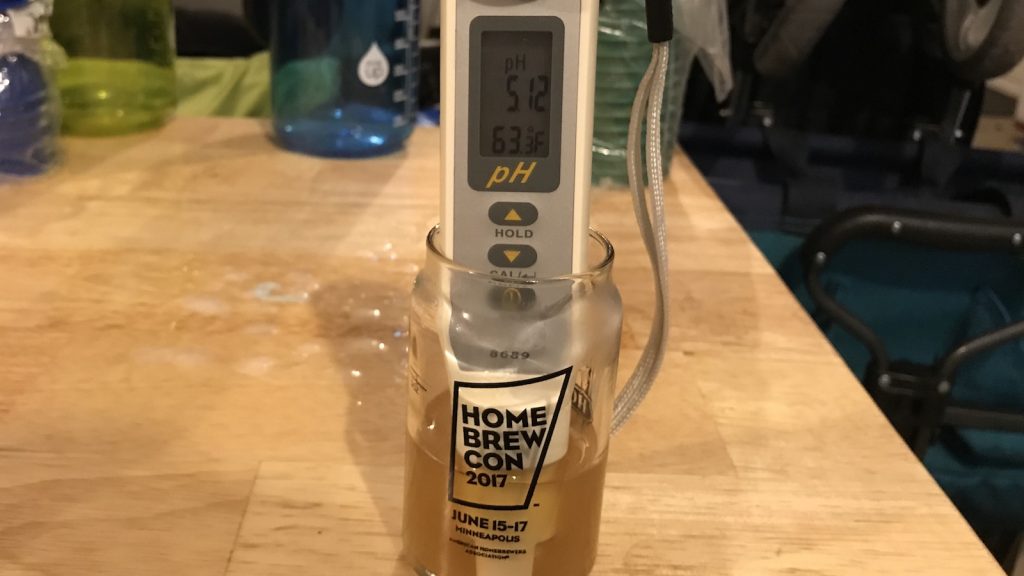
Once the 60 minute mash was complete, I collected the sweet wort.
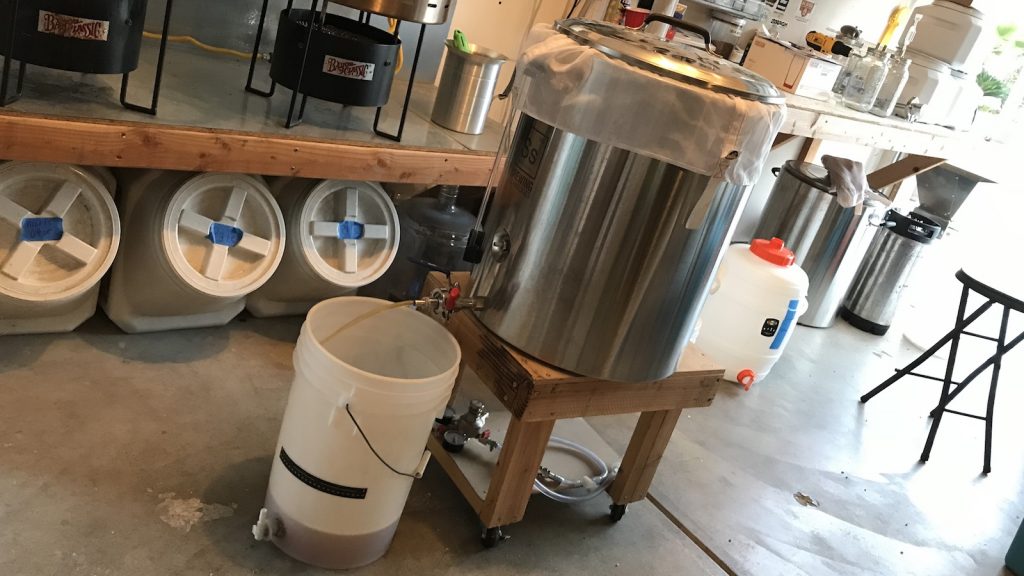
After transferring the wort to my kettle, I began heating it up, during which I weighed out the hops.
The wort was boiled for 30 minutes with hops added as stated in the recipe.
With the boil complete, I quickly chilled the wort to a few degrees warmer than my groundwater temperature.
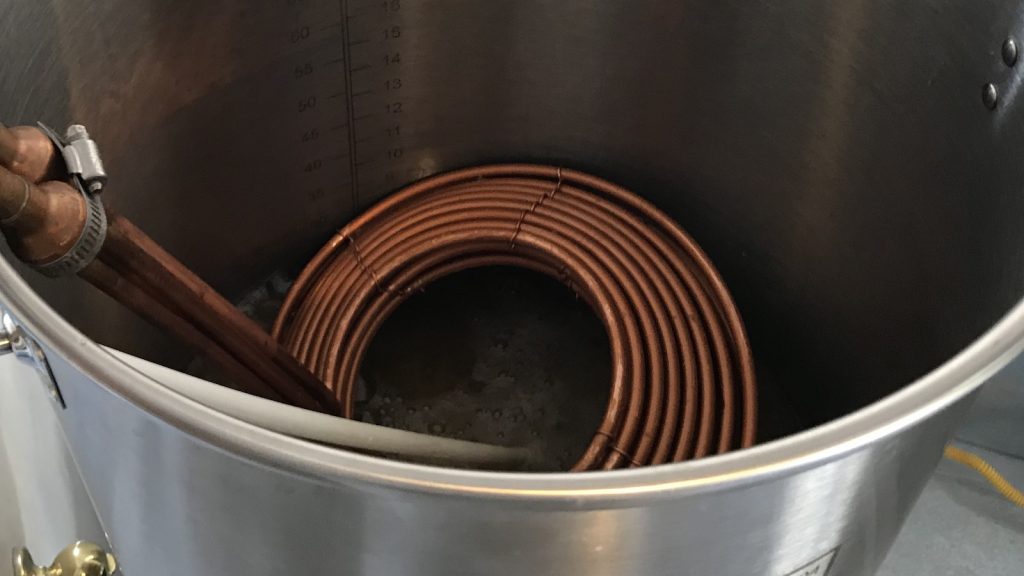
A refractometer measurement at this point revealed I’d hit the my planned OG.
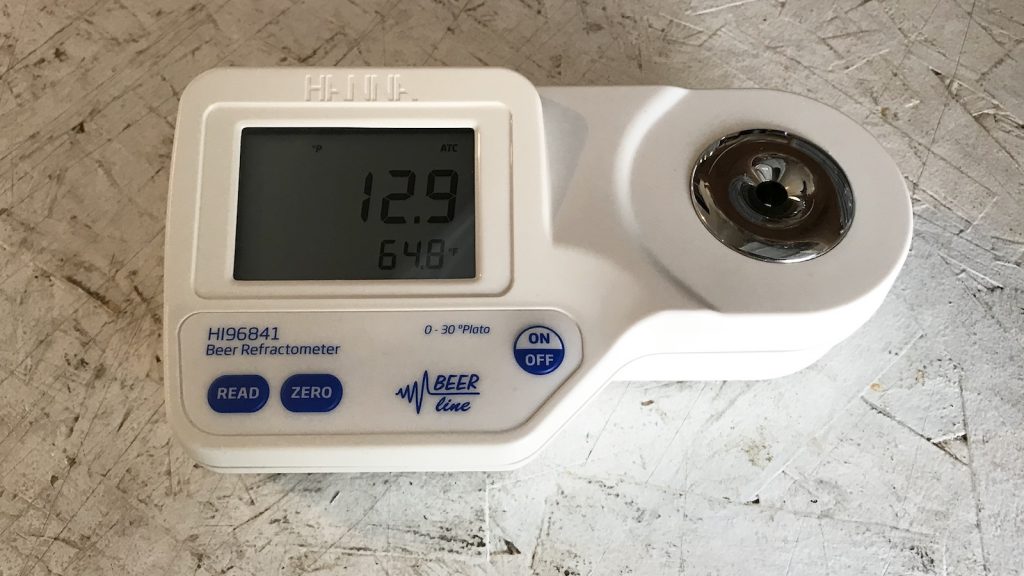
I racked 5.5 gallons/21 liters of chilled wort to a Brew Bucket that I placed in a chamber controlled to my desired fermentation temperature.
I returned to pitch the yeast 2 hours later when the temperature had stabilized at 66°F/19°C. Fermentation took off quickly and I noticed slowed activity 5 days later, at which point I tossed in the dry hop addition then raised the temperature to 72˚F/23˚C to encourage complete attenuation. A hydrometer measurement 5 days later indicated FG had been reached.
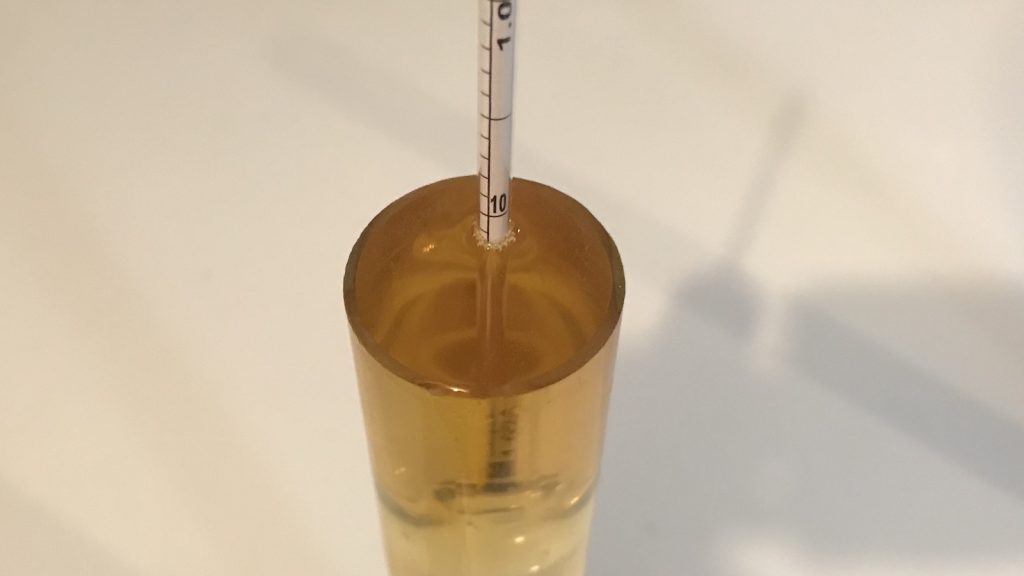
I proceeded to cold crash overnight, fine with gelatin, then rack the beer to a keg.
The filled keg was placed in my cold keezer where it was burst carbonated for 15 hours before I reduced the gas to serving pressure and allowed the beer to condition for another few days before serving it to participants.
| METHOD |
Participants were instructed to focus only on the aromatic qualities of the beer before evaluating the flavor. For each aroma and flavor descriptor, tasters were asked to write-in the perceived strength of that particular characteristic on a 0-9 scale where a rating of 0 meant they did not perceive the character at all and a rating of 9 meant the character was extremely strong. Once the data was collected, the average rating of each aroma and flavor descriptor was compiled and analyzed.
| RESULTS |
A total of 15 people participated in the evaluation of this beer, all blind to the hop variety used until after they completed the survey. The average aroma and flavor ratings for each descriptor were plotted on a radar graph.
Average Ratings of Aroma and Flavor Perceptions
The 3 characteristics endorsed as being most prominent by participants:
| Aroma | Flavor |
| Citrus | Citrus |
| Tropical Fruit | Floral |
| Stone Fruit | Pine |
The 3 characteristics endorsed as being least prominent by participants:
| Aroma | Flavor |
| Onion/Garlic | Onion/Garlic |
| Grassy | Berry |
| Earthy/Woody | Melon |
Participants were then asked to rate the pungency of the overall hop character.
Next, they were instructed to identify beer styles they thought the hop would work well in.
Finally, tasters were asked to rate how much they enjoyed the hop character on a 1 to 10 scale.
My Impressions: I began developing my impressions of 007 Golden Hop when I opened the bag on brew day, it had a remarkably pungent fruity aroma that I found very pleasant. I was again hit with this when dry hopping, making me all the more excited for the finished beer. Upon bringing the first carbonated sample to my face, I immediately caught a whiff of the expected aroma– citrus and ripe tropical fruit. Then I took a sip and was taken aback by how different it tasted compared to the way it smelled. The characteristics I detected in the aroma were slightly muted while piney, floral, and even minty notes seemed to be amplified. It was an odd though not at all unpleasant experience, I actually ended up liking the beer quite a bit!
| CONCLUSION |
In my time as a craft beer drinker and homebrewer, I’ve had the opportunity to try beers made with a bunch of different hop varieties, nearly all of which I experienced as imparting a flavor that’s mostly similar to the aroma. Interestingly, based on the evaluations of blind tasters as well as my own experience, the aromatic characteristics imparted by 007 Golden Hop are surprisingly different than the flavor. While tasters experienced citrus and tropical fruit as being prominent in both, a look at the average aroma and flavor ratings reveals tasters perceived strong pine, resinous, and floral flavors from 007 Golden Hop while the aroma was marked by a stronger fruity presence. Definitely not a unidimensional variety.
My presumption after initial samples of this single hop beer was that tasters might be put off by the curious juxtaposition of aroma and flavor, yet the data shows a majority of participants rather enjoyed the characteristics imparted by 007 Golden Hop. One person did report, following completion of the survey, his rather strong dislike of the hop character in the beer, but for the most part, tasters requested refills, a promising sign for a new hop variety.
Overall, I think 007 Golden Hop has a lot of potential in today’s brewing world, particularly for those looking to craft a pungent and unique hoppy Pale or IPA. However, while the aroma was delectably fruity, the pine and mint I detected in the flavor reminded me of Northern Brewer hops, making me curious to see how 007 Golden Hop might play in California Common inspired beer. Something I certainly plan to try in the future!
007 Golden Hop is available now in various package sizes at Yakima Valley Hops, get them while you can! If you have any thoughts on 007 Golden Hop, please feel free to share them in the comments section below.
Support for The Hop Chronicles comes from Yakima Valley Hops, suppliers of over 40 varieties of hops ranging from classics like Saaz and Cascade to yet-to-be-named experimental options fresh from the source. Offering great prices with reasonable shipping, consider Yakima Valley Hops for your next hop purchase.
Support Brülosophy In Style!
All designs are available in various colors and sizes on Amazon!
Follow Brülosophy on:
FACEBOOK | TWITTER | INSTAGRAM
If you enjoy this stuff and feel compelled to support Brulosophy.com, please check out the Support Us page for details on how you can very easily do so. Thanks!



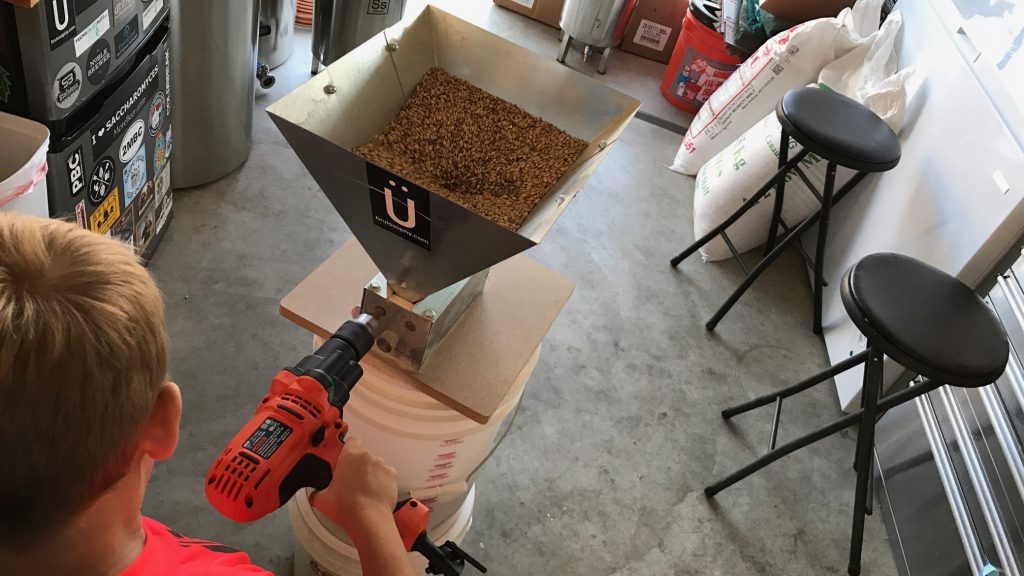
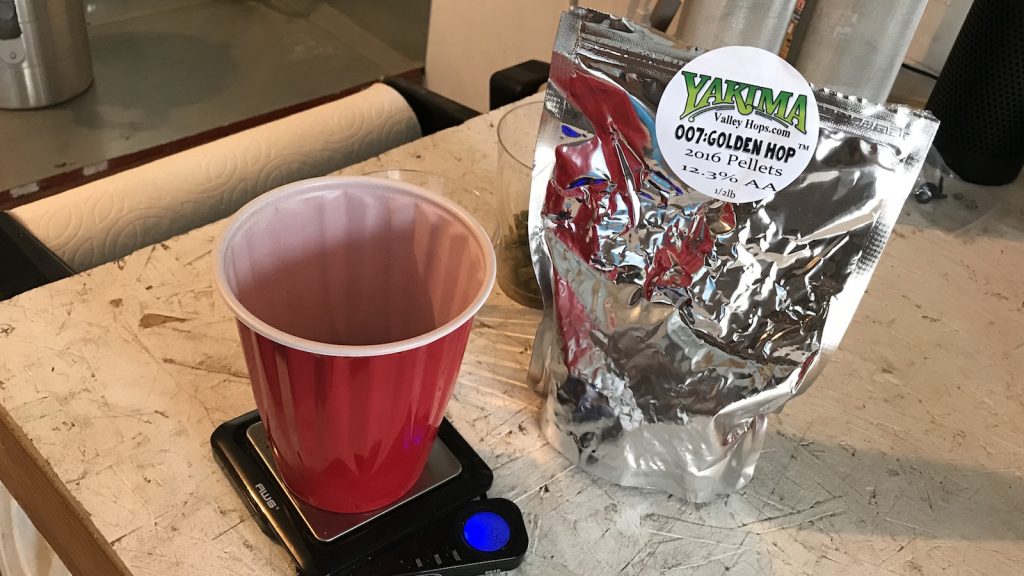

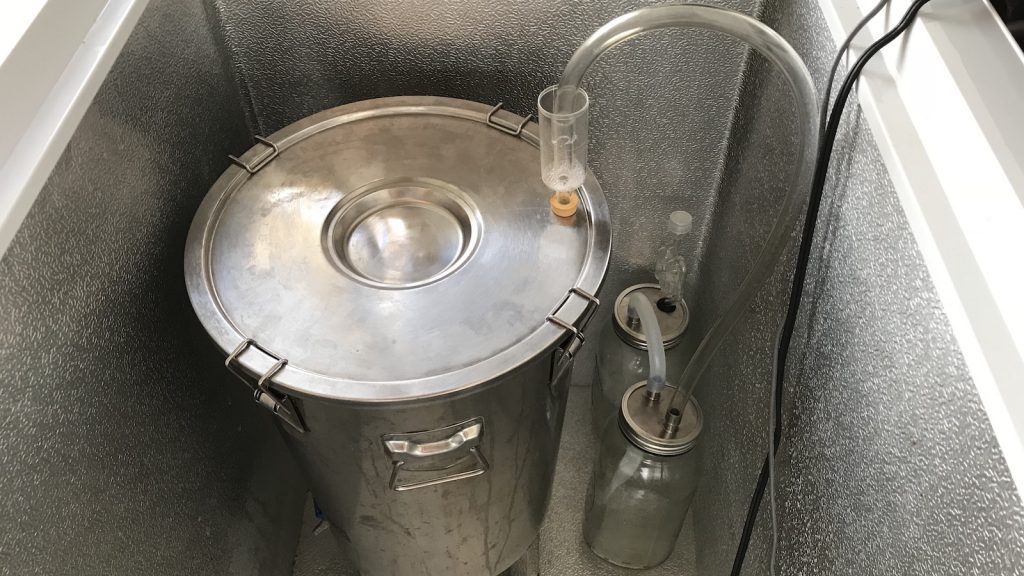
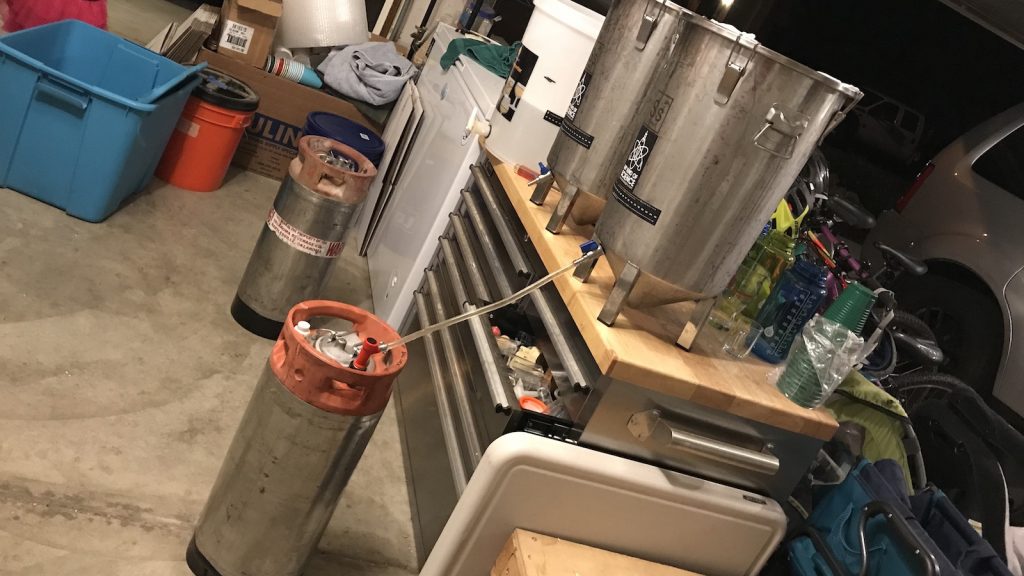
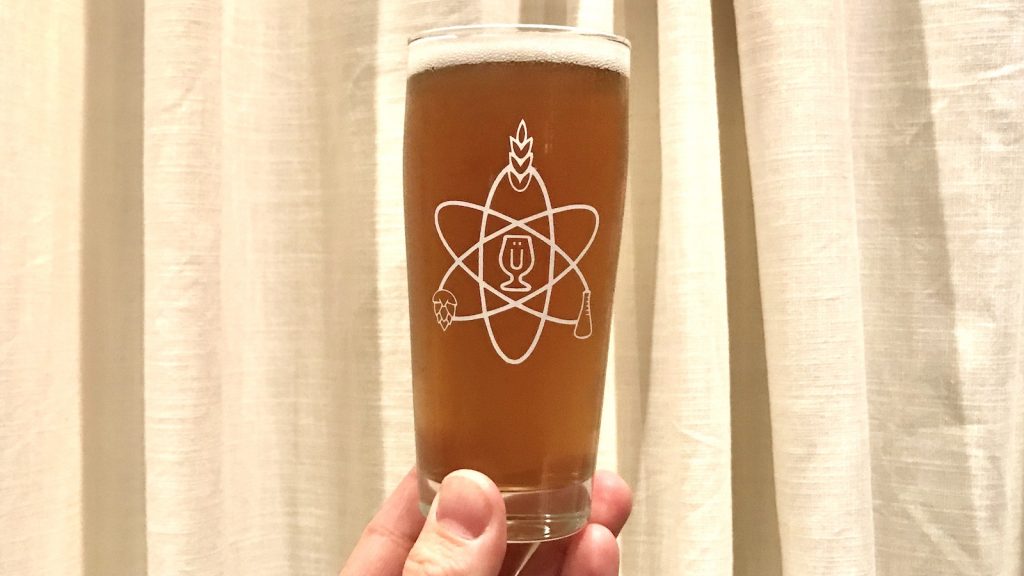
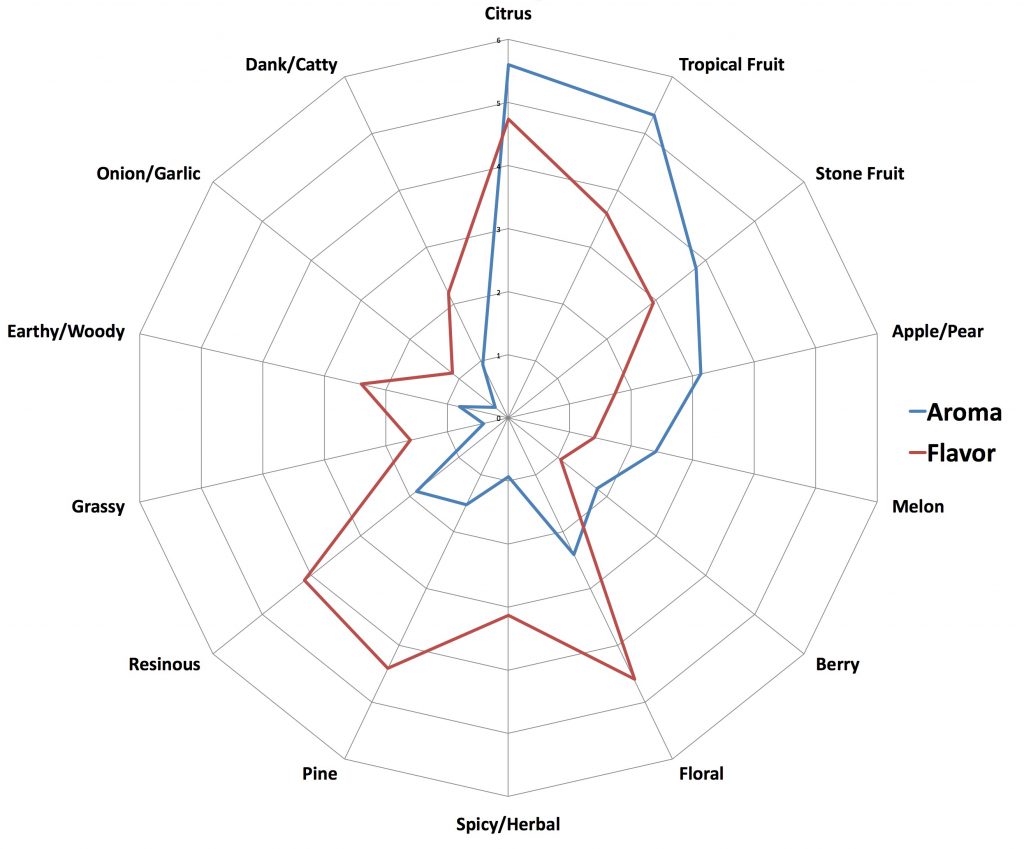
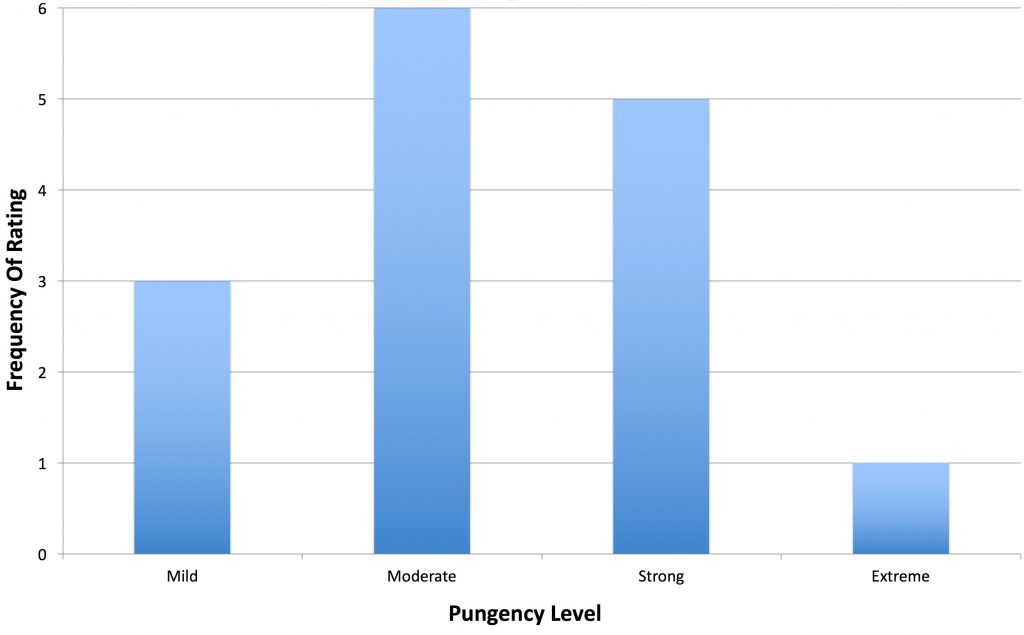
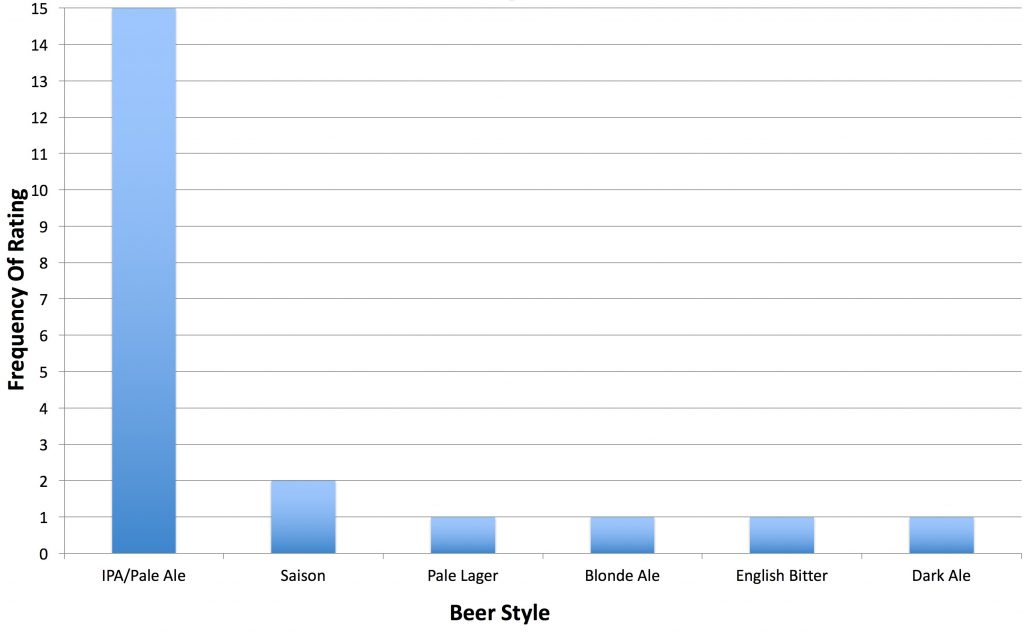
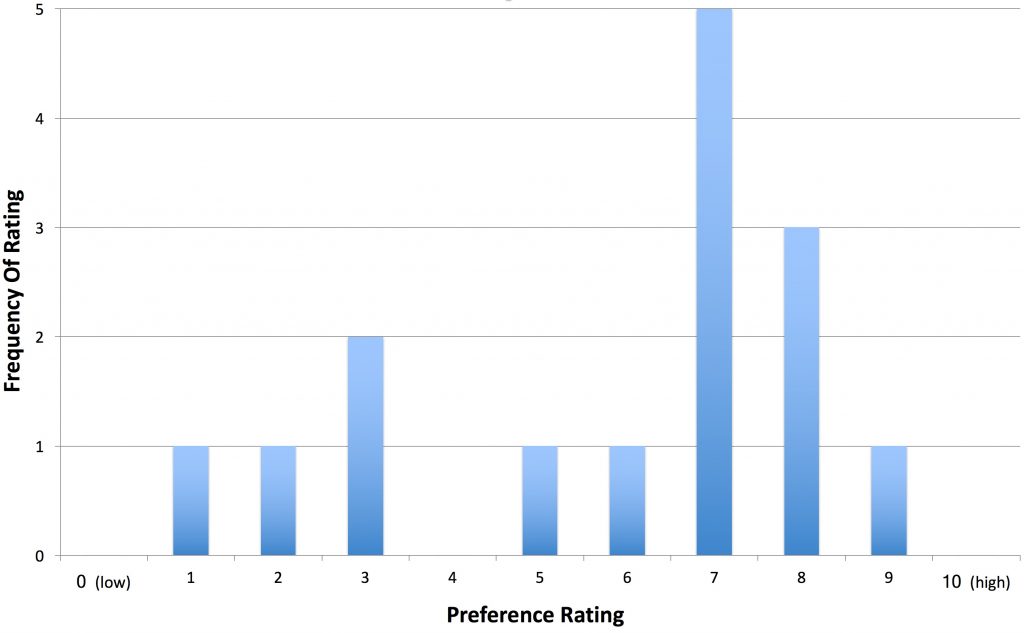











18 thoughts on “The Hop Chronicles | 007 Golden Hop (2016) Pale Ale”
Interesting! I’ll have to try it sometime myself.
A year back or do I did have a commercial SMaSH made with it and the only flavor I got was pine and resin.
I used quite a bit of this hop in an APA. I got the same aroma from the bag as described here. The flavor in the beer had a pepper taste to it. It was weird.
Recipe says 30-min FWH & boil, but article states 60-min boil
Wow, quite a blow-off set up! What does that buy you compared to the standard hose into a open jar method?
I probably missed from a different post, but why does the blowoff tube go to a mason jar then to another mason jar, then out an airlock?
Cheers and thanks for another great article. Keep up the good work!
I suspect that the first jar is for yeast capture, the second for any remaining blow-off.
It’s for “harvesting” CO2, which then gets pulled back into the fermenter during cold crashing. The set-up is designed to reduce O2 uptake with the cold crash, by preventing the loss of the CO2 out of a regular air lock.
But is it effective?? Future experiment perhaps?
It’s actually a CO2 capture setup. The first jar is filled with sanitizer that gets pushed to the second jar as the first fills with CO2. During cold crash, that CO2 is then sucked back into the fermentor rather that O2 being sucked through a standard airlock. Pretty nifty setup from Nor Cal Brewing.
Oh my
Are the lids custom or purchased from a website?
Wait sorry, just made sense of the Nor Cal reference!
I have to look into this. I often rack to a keg without cold crashing, and let the cold crash happen during carbonation.
When can we expect the review of the boil kettles? Are they providing faster boil time?
My impression is that almost every hop in the chronicles is rated highly for the IPA/Pale Ale beer style. This makes sense, since these are hoppy styles, so when participants taste any distinct hop character they think “this is kinda like an IPA” or “this would be good in an IPA.”
But I wonder how this can be translated into useful advice for a homebrewer trying to decide what hops to use in a recipe. If I’m brewing an IPA, the conclusion would seem to be “Use any hop at all, just use a lot of it.”
Maybe we should use the chronicles to exclude hops from certain recipes instead of to include them? So maybe the lowest style rating is the most helpful, rather than the highest rating?
What’s with the mash pH? Target 5.1?
To be honest, I designed the recipe with lower kilned Vienna but realized only after mashing in that I’d used Munich on accident. The water was adjusted to achieve pH 5.2, though I’ve stopped worrying too much about mash pH and roll with anything between 4.8 to 6.0.
Interesting, Martin B and Denny always reccomended 4.3-4.4
But it if that works for you then that’s all that matters. Do you bother adjusting your pre boil pH at all?
I’ve spoken with both of those guys many times about water chemistry and I’m pretty sure nether would recommend such a low mash pH. The go-to standard is typically pH 5.2, give or take depending on the style